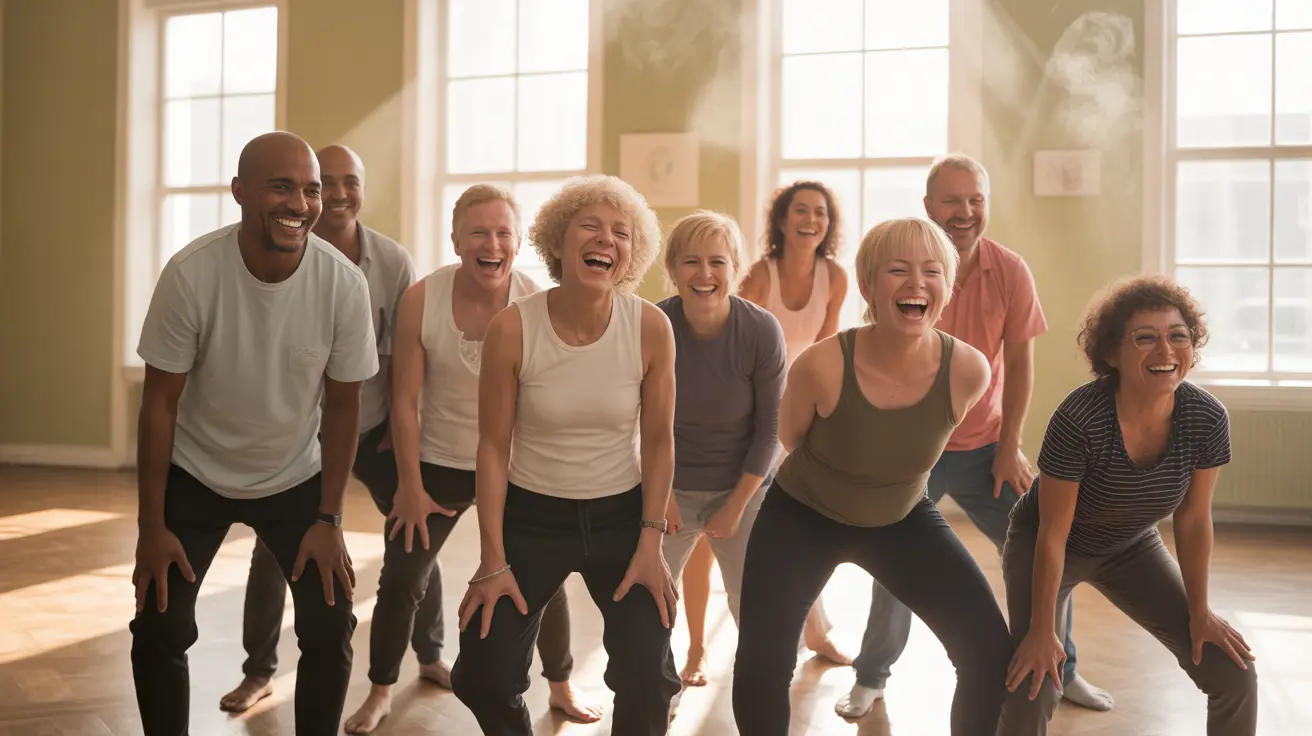Laughter yoga combines the power of voluntary laughter with yogic breathing exercises to create a unique and effective wellness practice. This innovative approach to health and happiness has gained popularity worldwide for its ability to boost both physical and mental well-being, regardless of whether the laughter is genuine or simulated at first.
Unlike traditional yoga, laughter yoga doesn't require complex poses or previous experience. Instead, it focuses on cultivating joy through intentional laughter exercises, making it accessible to people of all fitness levels and ages.
Understanding Laughter Yoga: Principles and Practice
Laughter yoga was developed by Dr. Madan Kataria in 1995, combining laughter exercises with pranayama (yogic breathing). The practice is based on the scientific understanding that the body cannot distinguish between fake and genuine laughter, providing similar physiological and psychological benefits regardless of the laughter's source.
The fundamental principle behind laughter yoga is "fake it till you make it." Through group dynamics and playful exercises, initial forced laughter often transforms into genuine, contagious laughter, creating a positive atmosphere that promotes healing and wellness.
The Science Behind Laughter Yoga
When we laugh, our bodies release endorphins, dopamine, and serotonin – known as "feel-good" hormones. These natural chemicals help reduce stress hormones like cortisol and adrenaline, leading to improved mood and decreased anxiety levels.
Regular practice of laughter yoga can lead to:
- Increased oxygen flow to the body and brain
- Enhanced immune system function
- Improved cardiovascular health
- Better respiratory function
- Reduced muscle tension
Components of a Laughter Yoga Session
A typical laughter yoga session consists of several key elements:
Warm-up Exercises
Sessions begin with gentle stretching, clapping, and rhythmic movements to help participants relax and release inhibitions.
Breathing Techniques
Deep breathing exercises (pranayama) are incorporated throughout the session to maximize oxygen intake and enhance the benefits of laughter.
Laughter Exercises
Participants engage in various structured activities that combine childlike playfulness with simulated laughter, such as:
- Greeting laughter
- Milkshake laughter
- Lion laughter
- Silent laughter
Grounding and Meditation
Sessions typically conclude with a period of relaxation or laughter meditation, allowing participants to integrate the experience and feel the sustained effects of the practice.
Social Benefits and Community Aspects
Laughter yoga is typically practiced in groups, fostering social connections and creating a supportive community environment. This social aspect helps combat loneliness and isolation while building lasting relationships through shared positive experiences.
The practice creates a judgment-free space where participants can express themselves freely and connect with others in a unique and uplifting way.
Frequently Asked Questions
What are the mental and physical health benefits of practicing laughter yoga regularly? Regular laughter yoga practice can reduce stress, anxiety, and depression while improving cardiovascular health, boosting immune function, and increasing oxygen flow throughout the body. It also helps enhance mood, increase energy levels, and promote better sleep quality.
How does laughter yoga reduce stress and improve mood compared to traditional aerobic exercise? Laughter yoga combines the benefits of laughter-induced endorphin release with deep breathing exercises, providing stress relief and mood enhancement without the physical demands of traditional aerobic exercise. It can be equally effective at reducing stress hormones while being more accessible to people with limited mobility.
Can laughter yoga be practiced by people of all ages and physical abilities? Yes, laughter yoga is highly adaptable and can be modified for participants of any age or physical ability. It can be practiced standing, sitting, or even lying down, making it accessible to everyone from children to seniors and those with physical limitations.
What does a typical laughter yoga session involve, and how do simulated laughs turn into real laughter? A typical session includes warm-up exercises, rhythmic clapping, breathing techniques, and various laughter exercises. Through group dynamics and the contagious nature of laughter, even forced laughter often naturally transforms into genuine laughter as participants become more comfortable and engaged.
How does laughter yoga help build social connections and reduce feelings of loneliness? Laughter yoga sessions create a supportive group environment where participants share positive experiences, helping to break down social barriers and foster genuine connections. The shared experience of laughter creates bonds between participants, leading to improved social relationships and reduced feelings of isolation.




